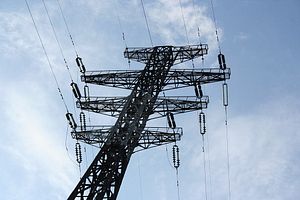Two Indian companies with contracts to construct power transmission lines in Afghanistan are expected to begin work in the coming weeks. The infrastructure is a necessary node in the CASA-1000 project, which aims to bring 1,300 megawatts (MW) of electricity from Kyrgyzstan and Tajikistan into Afghanistan and Pakistan.
In May Afghan authorities said they’d selected an Indian company and that work would begin once the procurement process was finished and the agreements finalized. In August, Afghan authorities said the project would take three years to complete, pushing operation of CASA-1000 into at least 2020.
Afghanistan is slated to receive 300 MW of Central Asian electricity with the remaining 1,000 MW continuing on to energy-starved Pakistan. Kabul is supposed to receive $50 million in transit fees annually, as well. The project, therefore, not only serves as an important facet of Afghanistan’s management of rising domestic electricity demand but also as a source of income.
The project has four major components: a 500 kV AC transmission line from Datka, in Kyrgyzstan, to Sughd, in Tajikistan; a 1300 megawatt AC-DC Convertor Station at Sangtuda, Tajikistan; a 750 kilometer High Voltage DC line from Sangtuda to Nowshera in Pakistan, via Afghanistan, and a 1,300 megawatt DC-AC Convertor Station at Nowshera.
“Of the four countries, Afghanistan is the first country which has wrapped up procurement works for the project; we have completed these works six months before the deadline,” Amanullah Ghalib, chairman Da Afghanistan Breshna Sherkat (DABS), said recently, according to Tolonews.
CASA-1000 is not without its risks: financial, security, and political.
The CASA-1000 project is made financially possible by the World Bank, which estimated last year that the project would cost $1.17 billion, though that number has grown since the project was first floated. Tolonews reported that, according to Energy and Water Minister Abdul Basir Azimi, the construction phase of the project in Afghanistan would cost $404 million, 80 percent of which would be funded by the World Bank and the rest by Afghanistan. Such international backing has made the project more likely to continue, but security and politics threaten to change its character or derail the project entirely. Tolonews also reported Afghan authorities as saying the project was worth $2.1 billion. (Which project cost figure is correct is unclear from available information).
As noted above, the project area stretches across seven Afghan provinces from Tajikistan to Pakistan. Looking at the map provided by the project’s website, the Afghan portion goes through several troubled spots, including Kunduz and Nangarhar. In September 2015, Kunduz city was seized by the Taliban; by October they’d been expelled but the province remains contested. Nangarhar, on the other hand, has become the locus of Islamic State Khorasan Province (ISKP) activity in Afghanistan. In April, the United States dropped one of its largest non-nuclear bombs, the GBU-43/B Massive Ordnance Air Blast (aka the Mother of All Bombs or MOAB) on an ISKP tunnel complex in Nangarhar’s Achin district.
With Islamic State territory shrinking in Iraq and Syria over the past several months, analysts have suggested that ISIS fighters, squeezed out of the Middle East, may find their way into Afghanistan. Recent reports of French ISIS fighters in Afghanistan would seem to support this theory. An influx of new (and experienced) militants will not make constructing development projects any easier.
Then there’s politics. While the World Bank envisions the project as the first step toward creating the “Central Asia-South Asia Regional Electricity Market (CASAREM),” it seems to have crossed minds in Islamabad that Kabul could be circumvented.
In summer 2016, a rumor filtered through Pakistani media that Afghanistan was going to “abandon its share” of the CASA-1000 electricity. The source of the rumor was a comment made by Pakistan’s water and power minister, Khawaja Muhammad Asif, at a protocol signing ceremony in Tajikistan that there was “weak demand” in Afghanistan.
It would seem, from Kabul’s progress on the technical aspects of the project, that Islamabad spoke too soon. Afghan officials still cite Afghanistan as drawing 300 MW from the project.
The selection of Indian companies further underscores India’s growing role in Afghanistan.
While tense relations between Kabul and Islamabad make projects like CASA-1000 more difficult, both have an overarching interest in this particular project’s completion. That doesn’t mean it will be completed on time or within budget, though, and the facts on the ground — Afghanistan’s security situation — could easily kick back the timetable by years or derail the project entirely.
































